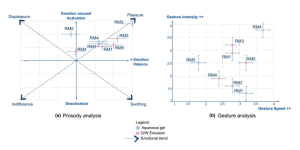
News & Press
Enhancing Emotional Impact: The Role of Ingredients and Formulation Texture in Cosmetics



22 March 2024
In cosmetic and dermocosmetic products, users’ perceptions go beyond mere enjoyment; they profoundly influence their perception of effectiveness. Thus, considering consumer perception during the early stages of formulation development is crucial. Our perception of objects or events results from a global interpretation by our brain, integrating sensory information from our 5 senses (sight, smell, hearing, taste, and touch) and emotional pathways.
Understanding Emotional Influence
As discussed in our previous article, sensory analysis, conducted in the laboratory, is an objective way to anticipate a product’s sensory characteristics. However, this methodology does not consider the irrational aspect of perception, and emotions heavily sway our decisions, often without conscious awareness. The product’s environment, including branding, packaging aesthetics, and fragrance, significantly influences emotional responses. Surprisingly, few studies have explored the emotional impact of ingredients in simple, unadorned formulas.
Exploring Emotional Triggers
With this in mind, collaborative studies started with neuroscience and human behaviour specialists. The focus was on assessing the emotional effects of key ingredients in simple gel or cream formulations. Ingredients such as rheology modifiers and emollients were selected, and formulations associated with specific textures, like gel-in-oil, were also investigated. Various methods, including voice and gesture analysis, were used to measure emotional responses during product application to the back of the hand.

Innovative Approaches
These studies pioneered innovative techniques, including real-time visualisation of brain impulses, to gauge emotional reactions to skincare textures. Surprisingly, even without external factors like fragrance or packaging, the study found skincare products can evoke both positive and negative emotions. Moreover, tested rheology modifiers and emollients were found to modulate the intensity of emotional responses.
(a, b) Influence of rheology modifiers on the different parameters. Prosody analysis (voice intensity reflecting emotional arousal and frequency reflecting emotion negative or positive valence) made it possible to rate the rheology modifiers according to two emotional trends (pleasure or slight non-significant displeasure). Gestures with high intensity and low speed reflect heavy and difficult-to-test textures associated with negative experiences (not the case for rheology modifiers).
To explore in-depth insights from these groundbreaking studies, refer to the comprehensive findings at the link: https://onlinelibrary.wiley.com/doi/10.1111/ics.12928
Moreover, the findings pave the way for an exciting prospect: the evaluation of Xylan ingredients derived from the innovative EnXylaScope project.








